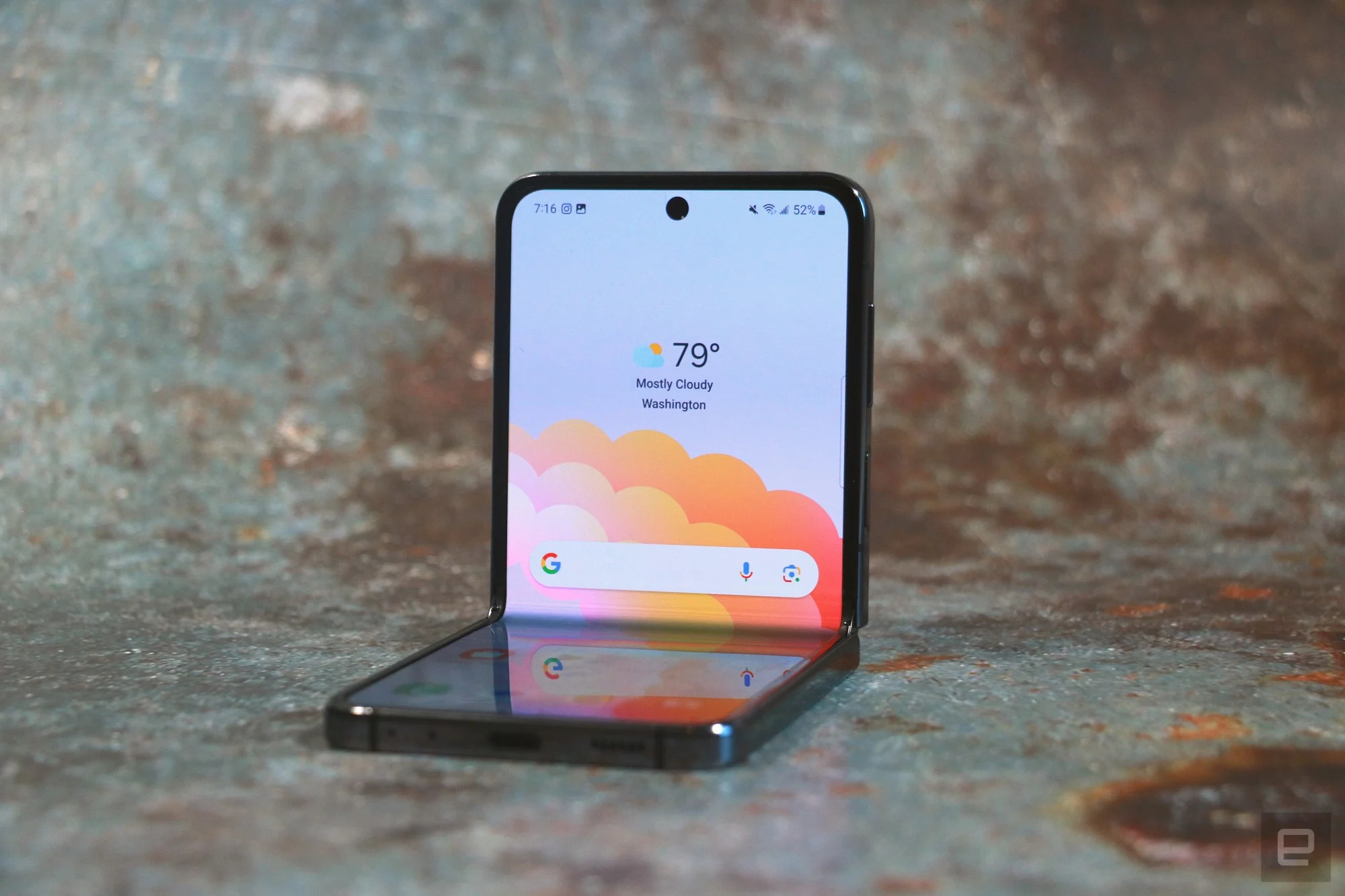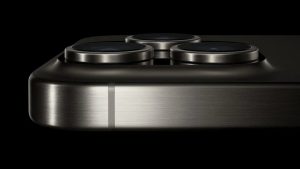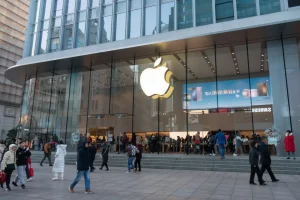The original iPhone’s screen size seems laughably small now, especially when you consider the behemoths we’re used to holding today. Yet, in an interesting twist, Samsung decided to utilize that seemingly ancient 3.5-inch dimension for its new Galaxy Z Flip 5. However, unlike Apple’s pioneering phone, this isn’t the primary screen. It’s a secondary display on a device that already boasts a foldable main panel. While its predecessor only sported a 1.9-inch secondary display, the new Galaxy Z Flip 5 boasts a more spacious 3.4-inch Flex Window (a misnomer considering it doesn’t flex, much to my chagrin).
Barring this noticeable upgrade, the rest of the phone feels all too familiar. The hinge is re-engineered for a more seamless fold, and the software gets a mild touch-up. But beyond these, the camera tech, water resistance, and battery remain largely unchanged. Its price tag matches the previous model, though Samsung generously doubled the base storage. The question remains: With emerging rivals in the foldable niche, can Samsung maintain its edge simply by riding on past successes?
Pros
- Useful external screen
- Compact when folded
- New hinge enables gapless design
Cons
- A lot of settings to dig through to maximize use
- Short battery life compared to typical Android phones
The Z Flip 5’s design
It appears that Samsung is playing it safe with the design of the Flip 5. Visually, there’s a clear sense of déjà vu as you examine the phone. Beyond the expanded external display, the Flip 5 seems almost like a carbon copy of its predecessor. And when you recall, the earlier model wasn’t all that different from the one before it either. The dimensions, weight, and overall silhouette remain unchanged, making it a 6.5 x 2.8-inch reflection of the past, right down to its 0.27-inch thickness and 6.6-ounce weight. It seems that innovation, at least in terms of design, took a backseat this time around.
While there’s a strong sense of familiarity in the Flip 5’s design, Samsung has made a few tweaks that distinguish this iteration. For starters, the orientation of the external cameras has shifted, transitioning from a vertical to a horizontal arrangement. This change, likely driven by the need to accommodate the expanded external screen, offers a subtle but noticeable difference. The color palette for the Flip 5 has also been refreshed. Gone is the repetitive purple shade of yesteryears, making way for a vibrant selection including pink, a refreshing minty green, as well as the classic cream and black. I did wish we received the captivating green for review, having been quite taken by it during Samsung’s presentation.
A standout feature in this model is Samsung’s newly introduced Flex Hinge. By allowing the device to fold seamlessly, it not only offers a more aesthetically pleasing look but also minimizes potential risks. Previous models had a slight gap when folded, making them vulnerable to foreign objects like keys, which could easily scratch the delicate screen. However, this doesn’t mean the Flip 5 is entirely impervious to external threats. Its IPX8 rating ensures that it’s waterproof, capable of surviving a brief dunk in water, but its resilience against solid particles like sand hasn’t been affirmed. In layman’s terms, while the Flip 5 can handle a quick splash, it’s best to keep it away from the beach. On the brighter side, its external build is quite robust, thanks to the Corning Gorilla Glass Victus 2 shielding both the rear and the Flex Window.
External display
The Flex Window, despite its somewhat exaggerated name, is a significant step up from the previous year’s Cover display. Sporting a 3.4-inch Super AMOLED panel, it supports a standard 60Hz refresh rate and boasts a resolution of 720 x 748. From the images I set as wallpapers, it’s clear that this display provides vivid and sharp visuals. However, its most prominent selling point is undeniably its size.
The practicality of this enlarged display is evident. It offers users the convenience of viewing more content without constant scrolling or navigation, and interactive elements, such as buttons, can be made more substantial, minimizing mis-taps. This enhancement is particularly beneficial for widgets. For instance, the Weather widget now provides forecasts spanning several days, and the Calendar widget showcases a comprehensive monthly overview. The Flex Window, in essence, allows users to access more information with just a glance, improving the overall user experience.
Wrap-up

Motorola’s Razr+ operates differently compared to the Flip 5 in terms of its cover screens. On the Flip 5, One UI is presented in a manner reminiscent of Samsung’s older Tizen OS, designed specifically for its smartwatches. Instead of functioning like a full-fledged Android, users navigate by swiping left to access various widgets like Timer, Stopwatch, Samsung Health, Dialer, and more. For quick settings, you simply drag down from the main screen, while a right swipe reveals notifications. However, with the Flip 5 supporting up to 13 widgets, cycling through to find the desired one can become cumbersome. To alleviate this, Samsung introduced a pinch gesture, allowing users to zoom out and view all available widgets simultaneously, facilitating quicker access.
While the Flex Window doesn’t support every app, Samsung has optimized a select few for the reduced screen size. Though users need to activate them via the Settings, apps like Google Maps, YouTube, Netflix, Messages, and WhatsApp can be accessed on the external display. Samsung likely believes these are the applications users will most likely want when the Flip remains closed.
Samsung’s Flip 5 doesn’t natively support the operation of all apps on its Flex Window. However, a select group of apps have been optimized to run on the more limited screen space. By navigating to the Settings, users can enable functionality for Google Maps, YouTube, Netflix, Messages, and WhatsApp on this external display. Evidently, these choices are based on what Samsung believes users would most likely engage with while the Flip remains closed.
For those seeking broader app functionality on the Flex Window, there’s an option. By installing the Good Lock application from the Galaxy App Store, virtually any app can be operated on the external screen. The process might seem a tad complex initially. Users need to download the MultiStar launcher within Good Lock and subsequently set the launcher as a Flex Window widget. Once set up, apps such as Instagram, Chrome, Reddit, and Gallery can be executed externally. While these apps function as anticipated, they do appear as miniaturized versions, adapted to the distinct shape of the screen.
The Flip 5’s Flex Window design deviates from the conventional rectangular form. Instead, it bears a resemblance to a document folder, largely square with a minor tab located on the bottom left. While unconventional, this design doesn’t hinder app or widget functionality. The tab acts as a shortcut – swiping up returns the user to the home page. Additionally, during an active timer or music playback, this tab space displays a progress countdown.
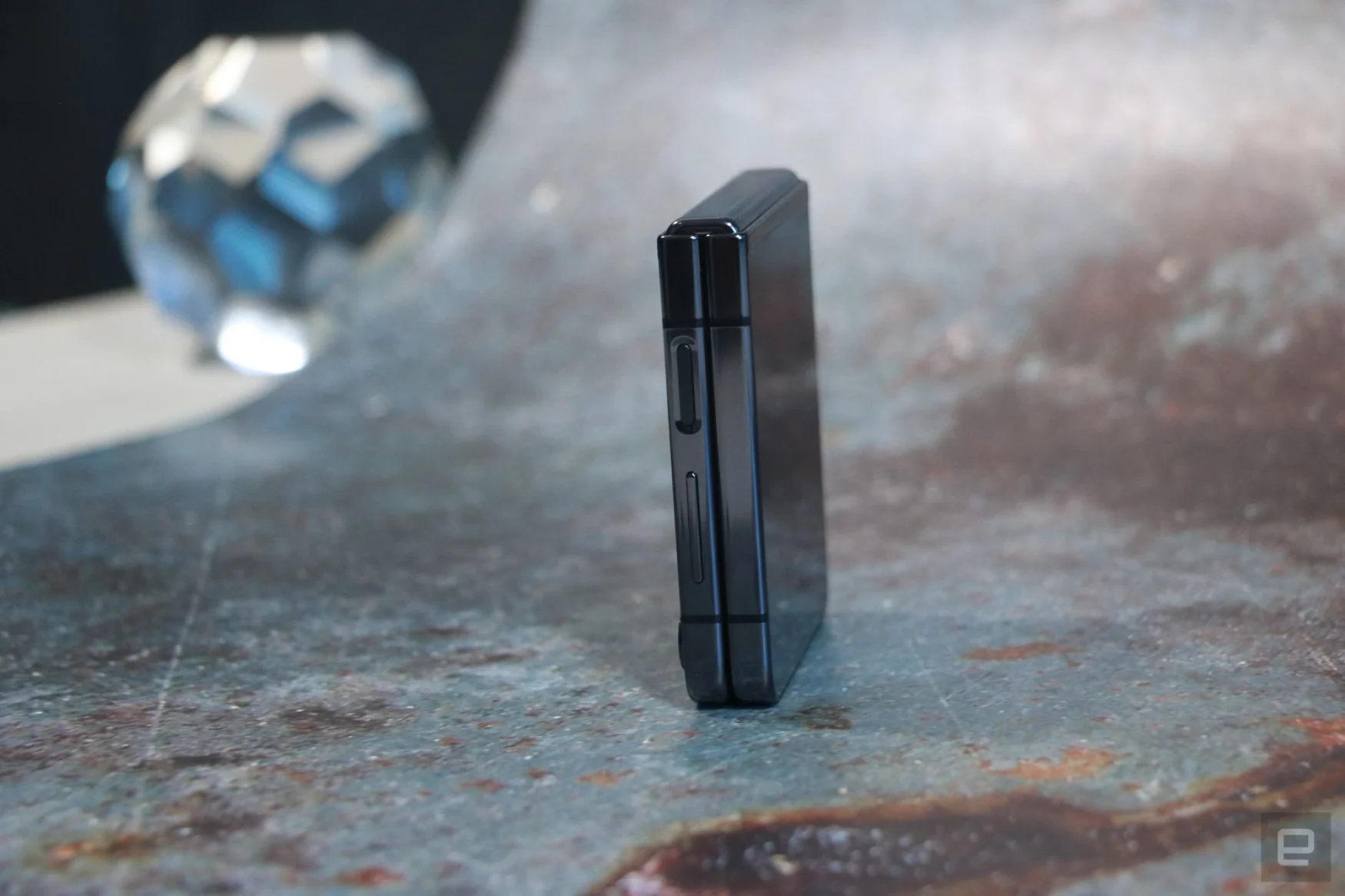
The enhanced Flex Window on the Flip 5 elevates the user experience, even without third-party installations like Good Lock. However, with Good Lock, users can fine-tune their experience. For instance, in applications like Telegram where notifications are typically obscured for privacy, users can’t see incoming messages directly from the Flex Window’s notification panel. This requires one to unfold the device to view the complete message. However, by permitting the app to run externally through Good Lock, tapping the notification seamlessly transitions the user directly into the app’s conversation. This integration of non-native functionalities offers a fluid and rewarding user experience.
Another notable upgrade on the Flip 5 is the messaging interface. Unlike its predecessor, there’s sufficient space on the Flip 5’s Flex Window to introduce a QWERTY keyboard layout. This feature is particularly advantageous for quick replies. Even for users with smaller hands, navigating keys like ‘Q’ and ‘A’ is effortless, more so with the inclusion of swipe typing. The software also outperforms its competitors like Moto. On Moto devices, the keyboard consumes the entire screen space, mandating an additional step to send the message. In contrast, Samsung’s design provides a glimpse of the ongoing conversation above the text input field, offering a more holistic view. This isn’t possible on other foldables like the Razr+.
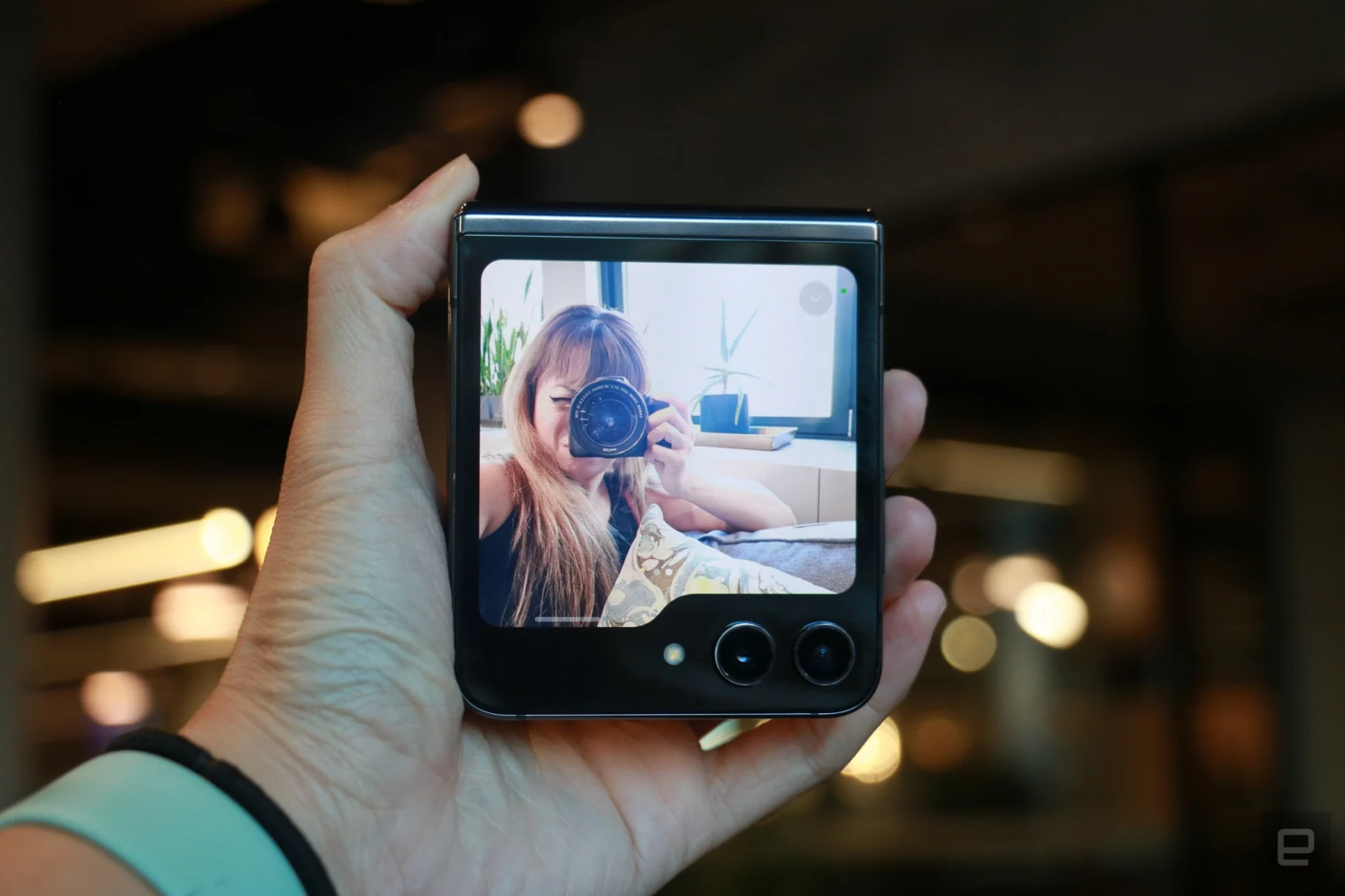
The improvements to the Flex Window on the Flip 5 provide not just better functionality for everyday tasks but also significantly enhance the camera experience. The enlarged screen real estate allows users to get a clearer view when capturing images or recording videos using the external cameras. This is especially valuable when taking selfies or setting up videos, as users can ensure they have the desired framing without having to unfold the phone.
The intuitive design also simplifies the process of toggling between different camera modes. Users can swiftly switch between Portrait, Photo, or Video modes with a simple sideways swipe. Additionally, the pinch-to-zoom function and the integration of the ultrawide camera at 0.5x zoom level add layers of flexibility, offering more options to capture the perfect shot. Overall, Samsung seems to have put a lot of thought into leveraging the enhanced Flex Window, ensuring that the user gets a streamlined and efficient camera experience.
Z Flip 5 Camera Quality: A Deep Dive
The Flip 5’s 12-megapixel primary camera and the accompanying ultra-wide sensor, despite being largely unchanged from the previous generation, managed to capture sharp and vivid images. This is evident in my shots taken at the Metropolitan Museum of Art. The Flip 5 rendered the skies in a vivid blue and the banners in a true red, bringing out the richness of the scene. In comparison, photos from the Moto Razr+ came off as more subdued and lacked that vibrancy.
Additionally, while I did find the Razr+’s selfies to possess a warm, rosy tint that I personally liked, the Z Flip 5 produced selfies that were truer to the actual scene and coloration. This gives the Flip 5 an edge in terms of color accuracy. Given the two options currently available in the US foldable market, the Samsung Galaxy Z Flip 5 is undeniably the superior choice in terms of camera performance.
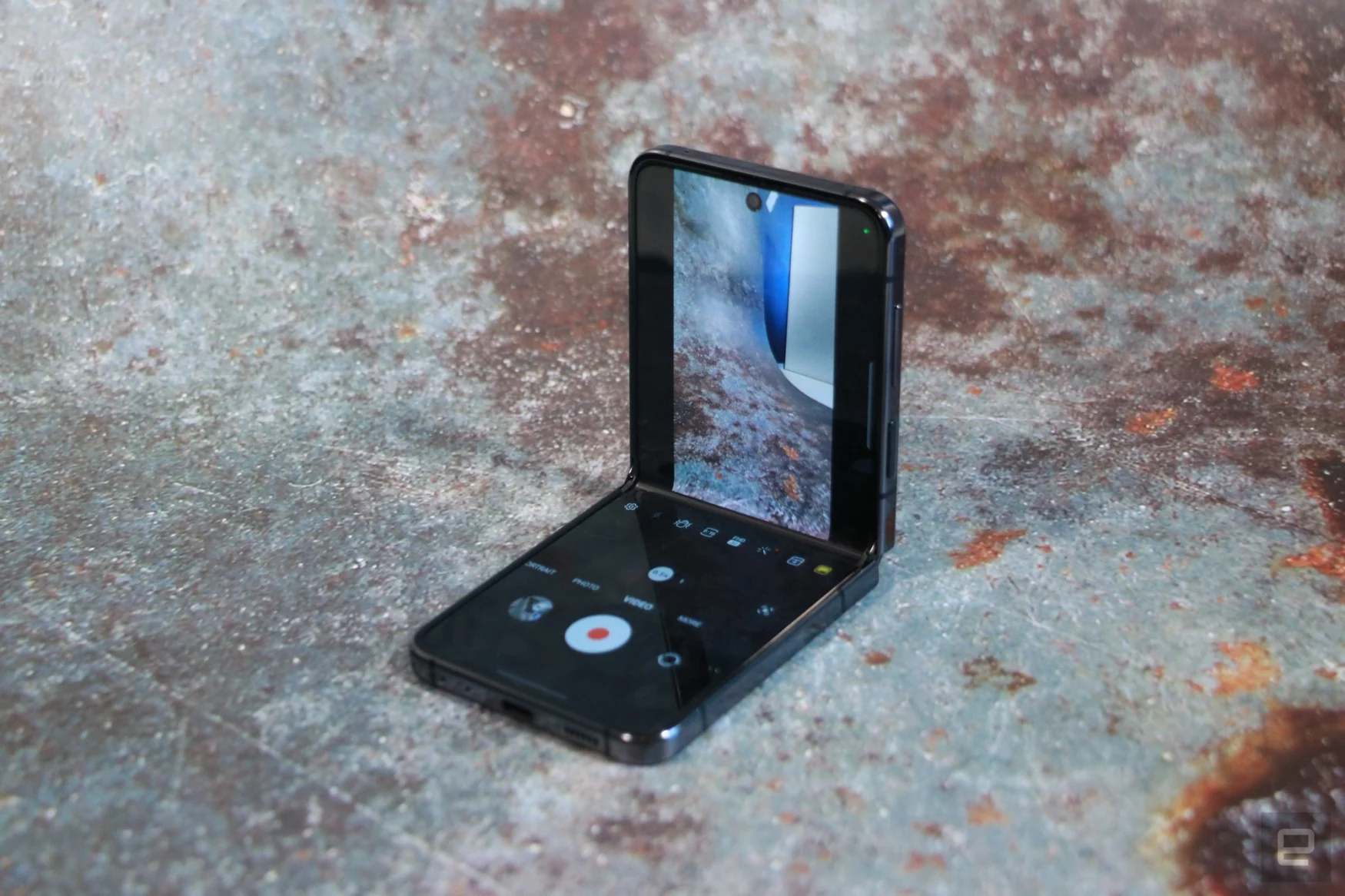
In low-light conditions, all three devices – the Flip 4, Flip 5, and Razr+ – struggled to some extent, presenting noticeable grain in their images. However, amidst the city lights of New York, both Samsung models exhibited a slight edge, better illuminating the architectural details of buildings. The most commendable improvement observed with the Flip 5 was its expedited Night mode capture. This faster shutter speed resulted in less blurring due to hand movement, leading to noticeably clearer selfies when compared to its older sibling, the Flip 4.
When it comes to video, I dabbled in creating some TikTok content using both the Flip 5 and Razr+. Both devices performed admirably, with video quality being comparable across the board. Ultimately, while the Flip 5’s cameras may not revolutionize your mobile photography experience, they are far from being subpar. They manage to capture decent shots, but don’t expect them to replace a professional camera anytime soon.
As a “regular” phone
The essence of the Flip 5, in many ways, mirrors the Flip 4 when it comes to the inner user experience. With its 6.7-inch Full HD AMOLED panel tucked neatly inside, it provides a comfortable space to immerse oneself in popular social media platforms like Reddit or Instagram. Moreover, it also proved efficient for casual gaming, with titles like Goods Sort and Solitaire running smoothly and providing a pleasant distraction.
The familiar presence of the crease on the inner screen, which has been a point of contention for some users in past versions, remains largely unchanged in the Flip 5. However, its impact on the display quality is minimal at best. Although there are instances where content might appear slightly off-color when viewed from specific angles because of the crease, it’s far from a deal-breaker. Interestingly, the crease’s tactile sensation is a surprising point of enjoyment. The act of running one’s thumb over it offers a strangely soothing, almost meditative experience, reminiscent of fidgeting habits many have.

When assessing the durability of the Z Flip 5, some preliminary tests were conducted. The panel demonstrated impressive resilience, especially when deliberately exerting pressure while beginning to fold the phone. However, having spent only just over a week with the device, the jury is still out on its long-term durability. That said, the advantage Samsung holds in the foldable market is its robust repair and replacement infrastructure. This, paired with their longer tenure in the market compared to companies like Motorola, places them in a better position to address potential issues or damages that users might encounter. Hence, for those who might have concerns about the device’s longevity or are known to have occasional accidents with their gadgets, Samsung’s system offers a safety net.
Delving into the software, Samsung has introduced updates to its Flex Mode. To elucidate, Flex Mode activates when the phone is partially opened, between angles of approximately 20 and 160 degrees. This mode results in a split-screen layout for compatible apps, with content typically displayed on the upper half and controls situated below. An example of this would be the YouTube app, where users can continue watching a video on the top section while simultaneously browsing through the comments below. Despite these updates, this feature was not explored extensively during the review period, mainly because its utility in day-to-day tasks remains limited for many users.
Samsung continues to innovate and refine its user experience with each iteration of its foldable phones. The Z Flip 5’s enhanced Flex Mode offers users an array of new functionalities, albeit buried under multiple settings. One of the new additions is the Flex dashboard, accessible via a button that appears on the bottom left of every app. The dashboard provides quick shortcuts for various actions, such as taking screenshots or accessing the notifications shade, which can significantly boost productivity.
However, not all these additions hit the mark. The touchpad feature, for example, feels a bit out of place. By using it, users can drag their fingers on the lower section of the screen to control a cursor on the upper half. While this feature could be beneficial for those with mobility issues, providing them with a more accessible means of navigation, it seems redundant for the general user. It’s often more intuitive and quicker to directly tap the desired area rather than maneuvering a cursor. This feature underscores the challenge tech companies face: striking a balance between offering enhanced features and maintaining a straightforward, user-friendly experience.
It’s commendable that Samsung is exploring ways to make the most of the Z Flip 5’s unique form factor. However, as with any innovation, not every feature will resonate with all users. Over time, feedback and user preferences will likely guide future refinements in this space.
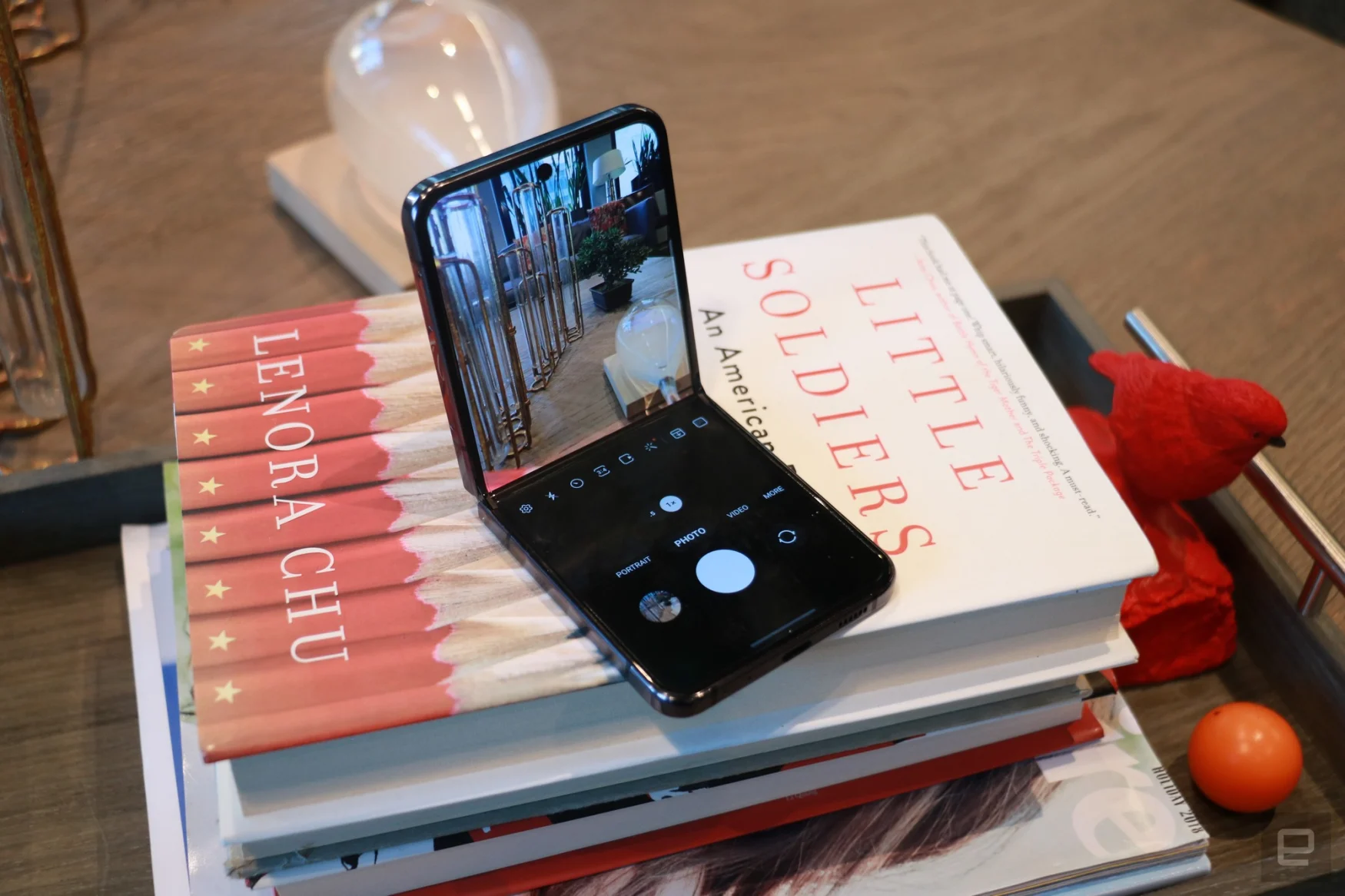
Performance and battery life on the Z Flip 5
The Samsung Z Flip 5 is redefining the notion that foldable phones are just a novelty and cannot match the performance of their non-foldable counterparts. The inclusion of the Snapdragon 8 Gen 2 for Galaxy processor means that it’s not just keeping pace with other flagships but is, in some instances, surpassing them. This shift towards high-end performance components in foldables makes them a much more attractive option for those looking to enjoy the unique form factor without compromising on speed and responsiveness.
A significant upgrade in this year’s model is the increase in storage. Starting at 256GB, users are getting twice the base storage of the previous iteration. This move is indicative of Samsung’s commitment to not only pushing the boundaries of design but also ensuring their foldables are at par with mainstream devices in terms of utility.
However, as the saying goes, every rose has its thorns. And for the Flip 5, battery life remains its Achilles’ heel. Sporting the same 3,700mAh battery as its predecessor means that it delivers a similar runtime. The more functional Flex Window, while being a terrific feature, also means there’s a larger display to power, potentially draining the battery faster. But since users might not need to open the main screen as frequently due to the usability of the Flex Window, the battery consumption seems to even out.
In summary, Samsung’s Z Flip 5, with its flagship-level performance, increased storage, and improved functionality, is narrowing the gap between foldables and traditional smartphones. But like most devices, it’s not without its challenges, and for this foldable, it’s striking the right balance between power consumption and battery capacity. Future iterations will undoubtedly continue to refine this balance, but for now, the Flip 5 stands as a testament to how far foldable technology has come.
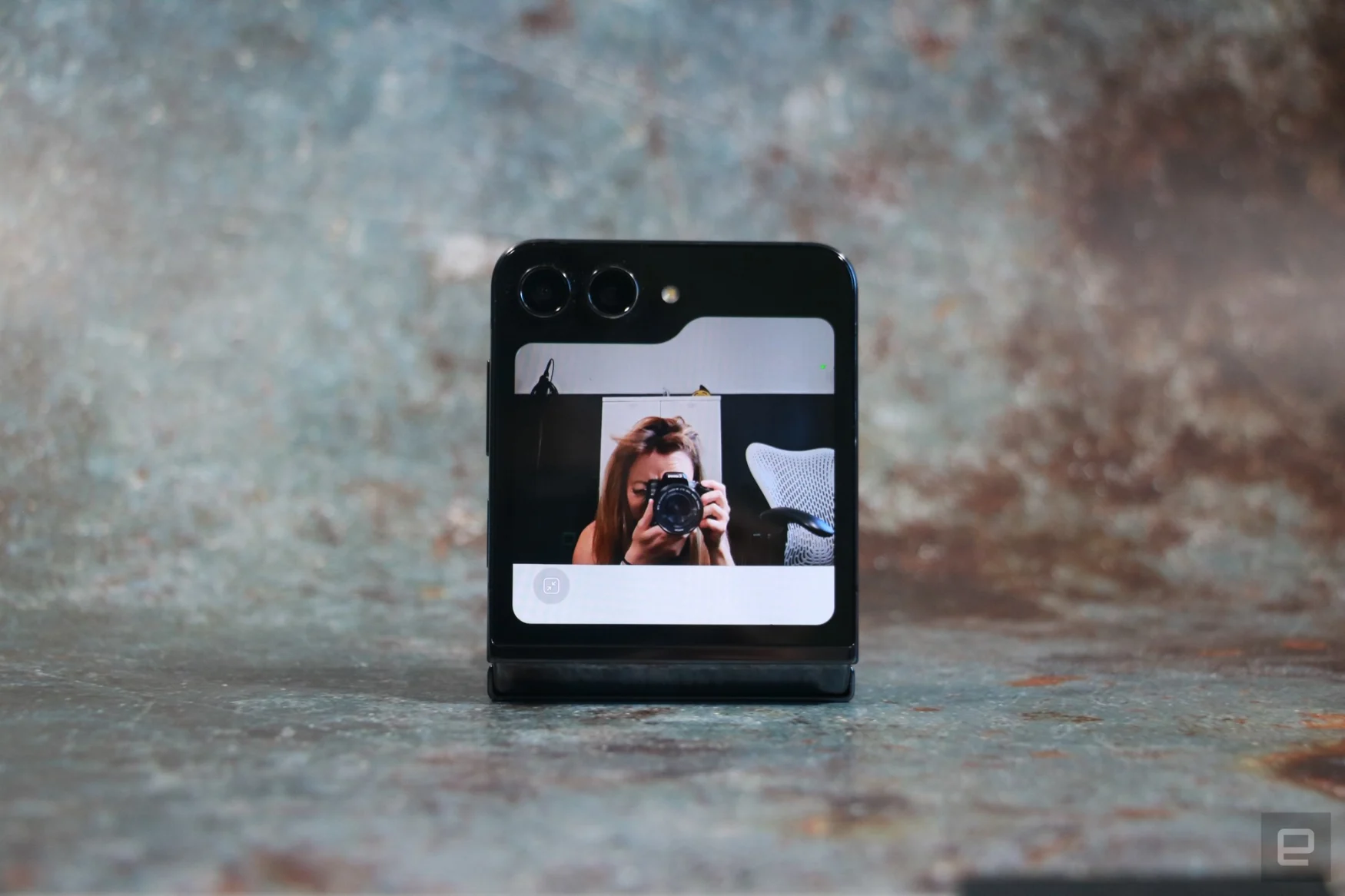
Wrap-up
Samsung’s Galaxy Z series continues to push the boundaries of mobile technology, attempting to cement its place in the mainstream. The Galaxy Z Flip 5 is emblematic of this journey, blending modern innovations with the undeniable charm of nostalgia. As the foldable phone space evolves, the Flip 5 stands out as an impressive mix of functionality and flair.
The upgraded Flex Window is a standout feature, making the device more practical and interactive for daily tasks, a significant step from its predecessors. It’s more than just a gimmick; it adds tangible utility to the phone. And while the camera quality might not be at the pinnacle of smartphone photography, it’s by no means lackluster. It’s capable and competent, and for many, the uniqueness of the Flip 5 will more than compensate for this.
Adopting any pioneering technology comes with its challenges. While the Flip 5 boasts significant advancements, it’s not exempt from the typical concerns associated with foldables — durability and battery life. It’s a device that requires a bit more care and attention, not just because of its price tag but also due to its novel design.
In essence, the Flip 5 is an ode to the future of smartphones, while still tipping its hat to the past. Whether you’re in it for the sheer joy of having a foldable device, the performance, or the nostalgia factor, the Galaxy Z Flip 5 promises an experience that’s bound to make heads turn. But like all trailblazing technologies, it requires a certain willingness to embrace its quirks and idiosyncrasies.

